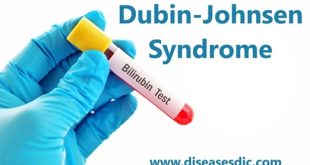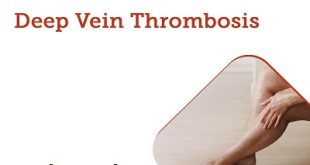Description
A dental abscess is an infection of the mouth, face, jaw, or throat that begins as a gum infection, tooth infection, or cavity. These infections are common in people with poor dental health and result from a lack of proper and timely dental care.
Bacteria from a cavity can extend into the gums, the cheek, the throat, beneath the tongue, or even into the jaw or facial bones. A dental abscess can become very painful when tissues become inflamed. Pus collects at the site of the infection and will become progressively more painful until it either ruptures and drains on its own or is drained surgically.
Sometimes the infection can progress to the point where swelling threatens to block the airway, causing difficulty breathing. Dental abscesses can also make you generally ill, with nausea, vomiting, fevers, chills, and sweats.
Pathophysiology
The term dentoalveolar abscess comprises 3 distinct processes, as follows:
- A periapical abscess that originates in the dental pulp and is usually secondary to dental caries is the most common dental abscess in children. Dental caries erodes the protective layers of the tooth (ie, enamel, dentin) and allows bacteria to invade the pulp, producing a pulpitis. Pulpitis can progress to necrosis, with bacterial invasion of the alveolar bone, causing an abscess.
- A periodontal abscess involves the supporting structures of the teeth (periodontal ligaments, alveolar bone). This is the most common dental abscess in adult but may occur in children with impaction of a foreign body in the gingiva.
- Pericoronitis describes the infection of the gum flap (operculum) that overlies a partially erupted tooth.
Generally, a non-pathologic resident bacterium gains entry when the host’s defenses are breached, rather than when a non-typical microorganism is introduced. The predominant species associated with a dental abscess include Bacteroides, Fusobacterium, Actinomyces, Peptococcus, Peptostreptococcus, and Porphyromonas as well as Prevotella oralis, Prevotella melaninogenica, and Streptococcus viridans.
Causes of Dental Abscess
A dental abscess occurs when bacteria infect and spread inside a tooth or your gums. The bacteria responsible for this are found in plaque, which also contains food particles left over from eating combined with saliva. Periapical abscesses are much more common than periodontal abscesses.
Causes of a periapical abscess
When a periapical abscess occurs, plaque bacteria infect your tooth as a result of dental caries (tiny holes caused by tooth decay) that form in the hard outer layer of your tooth (the enamel).
Dental caries breaks down the enamel and the softer layer of tissue underneath (dentine) and eventually reach the center of your tooth (pulp). This is known as pulpitis. The dental pulp in the middle of the tooth dies and the pulp chamber becomes infected.
The bacteria continue to infect the pulp until it reaches the bone that surrounds and supports your tooth (alveolar bone), where the periapical abscess forms.
Causes of a periodontal abscess
A periodontal abscess occurs when plaque bacteria affect your gums, causing gum disease (known as periodontitis). Periodontitis causes inflammation (redness and swelling) in your gums, which can make the tissue that surrounds the root of your tooth separate from the base of your tooth. This separation creates a tiny gap known as a periodontal pocket, which can be very difficult to keep clean and allows bacteria to enter and spread. The periodontal abscess is formed by the build-up of bacteria in the periodontal pocket.
A periodontal abscess may also occur as a result of:
- Dental procedures that create accidental periodontal pockets
- Antibiotic use in untreated periodontitis, which can mask the beginnings of an abscess
- Damage to your gums, even if you do not have periodontitis
Risk factors of Dental Abscess
- Poor dental hygiene. Not taking proper care of your teeth and gums – such as not brushing your teeth twice a day and not flossing – can increase your risk of tooth decay, gum disease, tooth abscess, and other dental and mouth complications.
- A diet high in sugar. Frequently eating and drinking foods rich in sugar, such as sweets and sodas, can contribute to dental cavities and turn into a tooth abscess.
Symptoms
The most common symptom of an abscess is an ache in the bone around the tooth, but you may also experience pain when chewing, swelling of the gums, or other symptoms.
More symptoms include:
- You may have a throbbing toothache that can radiate to your jaw, neck, or ear.
- Your teeth may be sensitive to hot, cold, and the pressure of chewing.
- You may develop a fever.
- You might have swelling in your face, cheek, and the lymph nodes of your jaw or neck.
- Your gums may be red and swollen.
- If the abscess ruptures, you might get a rush of bad-tasting and smelling discharge in your mouth and have an open, draining sore.
- If left untreated, the pain can become severe, often excruciating.
Symptoms of advanced infection may include:
- Nausea
- Vomiting
- Fever
- Chills
- Diarrhea
Complications of Dental Abscess
Don’t ignore a gum abscess. If left untreated, the infection can spread deeper into the gum tissue and affect surrounding teeth and bones. This can cause increased pain and swelling, and the infection could travel to other parts of your face and body. The following are the complications arise if the abscess is untreated.
- Dental cysts
- Osteomyelitis
- Cavernous sinus thrombosis
- Ludwig’s angina
- Maxillary sinusitis
In rare cases, a gum infection can travel to the bloodstream and cause a life-threatening complication known as sepsis. Sepsis symptoms include:
- A temperature above 101˚F (38˚C)
- Difficulty breathing
- Abdominal pain
- High heart rate
Diagnosis and Test
In addition to examining your tooth and the surrounding area, your dentist may:
- Tap on your teeth. A tooth that has an abscess at its root is generally sensitive to touch or pressure.
- Recommend an X-ray. An X-ray of the aching tooth can help identify an abscess. Your dentist may also use X-rays to determine whether the infection has spread, causing abscesses in other areas.
- Recommend a CT scan. If the abscess has spread to other areas within the neck, a CT scan may be used to assess the extent of the infection.
Treatment and Medications
Dental abscesses are treated by removing the source of the infection and draining away the pus.
Depending on the location of the abscess and how severe the infection is, possible treatments include:
- Removing the affected tooth (extraction) – this may be necessary if root canal treatment isn’t possible
- Root canal treatment – a procedure to remove the abscess from the root of an affected tooth before filling and sealing it
- Incision and drainage – where a small cut (incision) is made in the gum to drain the abscess (this is usually only a temporary solution and further treatment may be needed)
A local anesthetic will usually be used to numb your mouth for these procedures. More extensive operations may be carried out under general anesthetic (where you’re asleep).
Antibiotics aren’t routinely prescribed for dental abscesses but may be used if the infection spreads or is particularly severe.
Home remedies
- There are actions you can take at home to relieve the pain.
- Avoid food and drink that is either too hot or too cold.
- Chewing on the side of your mouth without an abscess will probably be less painful
- Do not floss around the affected area.
- Use a very soft toothbrush.
While home remedies can help make a person more comfortable while they wait for treatment, it is important to visit a healthcare professional for treatment to avoid any of the complications of a dental abscess.
Prevention of Dental Abscess
Avoiding tooth decay is essential to preventing a tooth abscess. Take good care of your teeth to avoid tooth decay:
- Use fluoridated drinking water.
- Brush your teeth at least twice a day with a fluoride toothpaste.
- Use dental floss or an interdental cleaner to clean between your teeth on a daily basis.
- Replace your toothbrush every three or four months, or whenever the bristles are frayed.
- Eat healthy food, limiting sugary items and between-meal snacks.
- Visit your dentist for regular checkups and professional cleanings.
- Consider using an antiseptic or a fluoride mouth rinse to add an extra layer of protection against tooth decay.
 Diseases Treatments Dictionary This is complete solution to read all diseases treatments Which covers Prevention, Causes, Symptoms, Medical Terms, Drugs, Prescription, Natural Remedies with cures and Treatments. Most of the common diseases were listed in names, split with categories.
Diseases Treatments Dictionary This is complete solution to read all diseases treatments Which covers Prevention, Causes, Symptoms, Medical Terms, Drugs, Prescription, Natural Remedies with cures and Treatments. Most of the common diseases were listed in names, split with categories.








treatment for hole
tooth
Tooth filling which can be done by an orthodontist.
It is very good and you can continue this.
please what should I do with a tooth that has hole deep down the cavity?
Please consult a dentist. clean and fil with the dental cement.
my boy fell down and removed his front teeth at the age of 2 half yrs. Can he grow another teeth within that period of the yr, b4 the main teeth will come up at the age of 5yrs. Pls help.
please consult a doctor.
ᴛʜᴀɴᴋs sᴏᴏᴍᴜᴄʜ. ᴛʜɪs ɪs ᴀ ᴡᴇʟʟ ᴛᴏ ᴅᴏ ᴘʟᴀᴛғᴏʀᴍ ғᴏʀ sᴇʟғ ᴘʀᴇᴠᴇɴᴛɪᴏɴ ᴀɴᴅ ᴘʀᴏᴛᴇᴄᴛɪᴏɴ.
I only need remedies for whitening and clean teeth
Try Oil Pulling, Brush With Baking Soda, Use Hydrogen Peroxide, Use Apple Cider Vinegar, Use Fruits and Vegetables like strawberries and Pineapple.
giving our kids sweets, soda and biscuits always is not good for our teeth.Thank you
orlistat is best in combinations With stations?
See I have the same problem with the teeth so what can’t I do to make it better
Please consult a dentist asap.
Please what makes the mouth to be smelling?
90% of bad breath comes from proteins broken down in your mouth. When bad breath is caused by oral problems, it usually smells like rotten eggs. This is caused by the breakdown of cysteine at the front of the tongue or on the gums. It’s a sign of poor oral hygiene.
what can I do about side face swollen ?
This may be due to a dental problem or Salivary gland infections. Better consult a doctor to get an appropriate diagnosis.
causes of bad breathing or mouth odor and possible treatment please, thank you Doctor. God bless you!
http://diseasesdic.com/bad-breath-or-halitosis-causes-treatment-and-preventions/
what is the cure of teeth that has hole.
The dental filling is a permanent cure.
please what is the name of the toothpaste and mouth wash i will
be using because my teeth is paining me.i am rinsing my mouth with warm water with salt.i mean flouride toothpaste and antiseptic I will be using.thanks
Please consult a dentist.
please tell me the name of the flouride toothpaste and antiseptic mouth I can be using because my teeth is paining me.thanks
Please consult a dentist to get treated with the pain.
It’s so dangerous, but great is that it’s avoidable and curable .
please what causes mouth odour and it treatment for it please
Bowel inflammation or changes in the acidic content of the stomach causes odor.
kdly suggest drugs and prevention for often mouth abscess or saw. it Orcus mostly when I did not eat in time or after fasting.
Kindly have a look into the post for drugs and prevention of mouth abscess.
What type of antibiotics is helpful in dental abscess at the first-time of treatment …
Antibiotics of the penicillin class, such as penicillin and amoxicillin, are most commonly used to help treat tooth infections. An antibiotic called metronidazole may be given for some types of bacterial infections.
what should be the medicine to prescribe??
For this dental abscess an antibiotic that can effectively eliminate your infection. Antibiotics of the penicillin class, such as penicillin and amoxicillin, are most commonly used to help treat tooth infections. An antibiotic called metronidazole may be given for some types of bacterial infections.